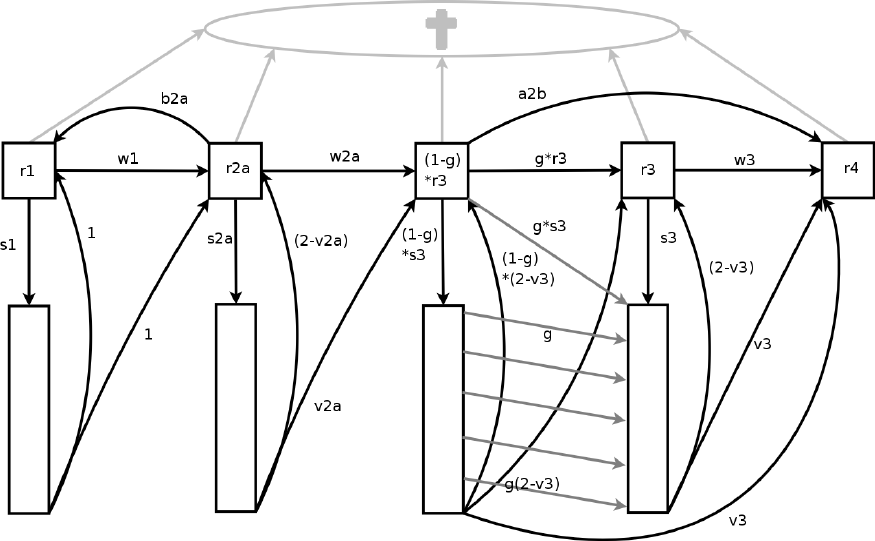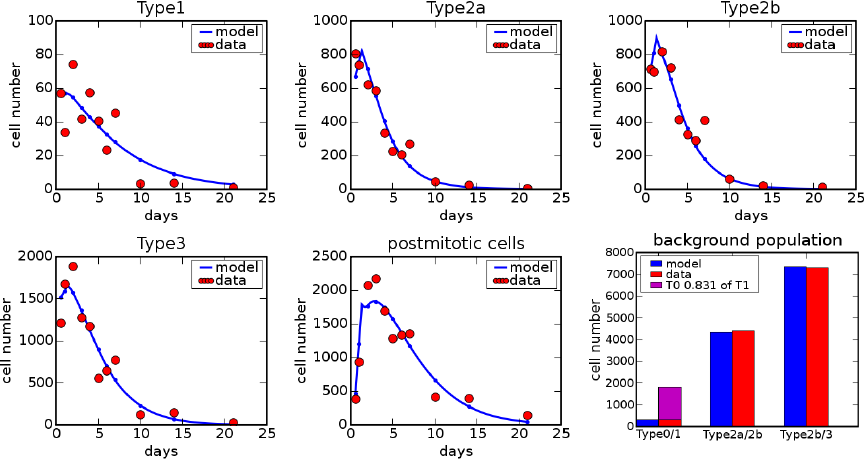
Based on the preceding project Dynamics of adult neurogenesis in the hippocampus, Part I and on new data from Imke Kirste in the group of Gerd Kempermann we have developed a refined model of adult neurogenesis, see figure 1. It takes more cell types into account and has a better temporal resolution than the previous model.

Figure 1: Refined model of the dynamics of neurogenesis. Long boxes indicate cell populations that are in cell division; squares indicate cell populations that are not. In this model we differentiate all five cell types for which population data have been measured, only the first four can actually divide.
The model not only allows us to simulate the populations of labeled cells over time but also the background population of unlabeled cells and the labeling process. The simulation results fit the experimental data well and provide information also about parameters, such as division constants, bleaching time course, and cell death, that are difficult to get directly from the experiment.

Figure 2: Simulation results of the refined model in comparison to experimental data for the five different cell types measured over time after the labeling process. In the lower right panel is shown the background populations of cells as simulated without labels (in particular without bleaching) and as estimated experimentally. The model suggests that only a small fraction of Type 1 cells are active. The purple bar indicates the inactive Type 1 cells.
The model now serves as a basis for further experiments that can be designed more targeted than would be possible without such a model.
Black colored reference are the principal ones. Gray colored references are listed for the sake of completeness only. They contain little additional information. .ps-files are optimized for printing; .pdf-files are optimized for viewing at the computer.